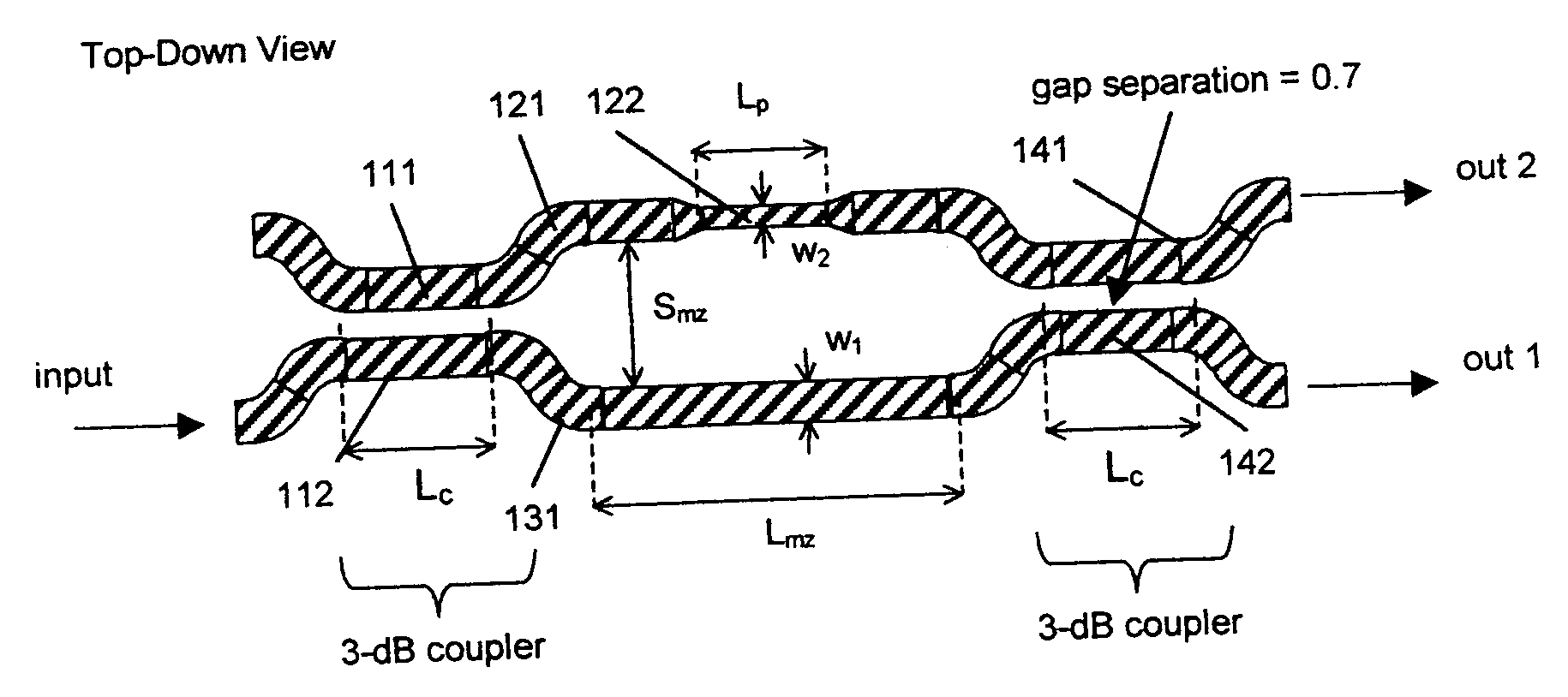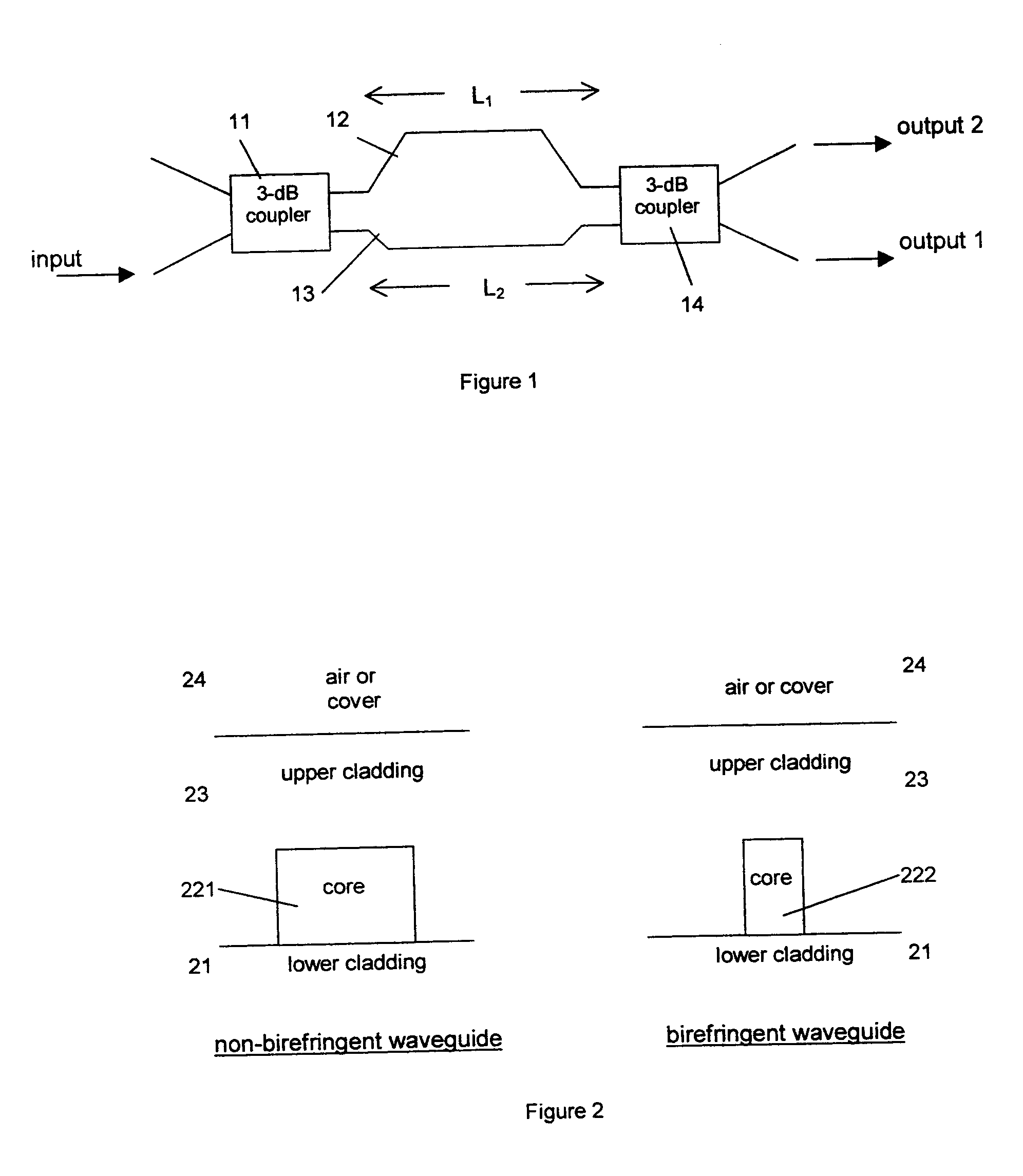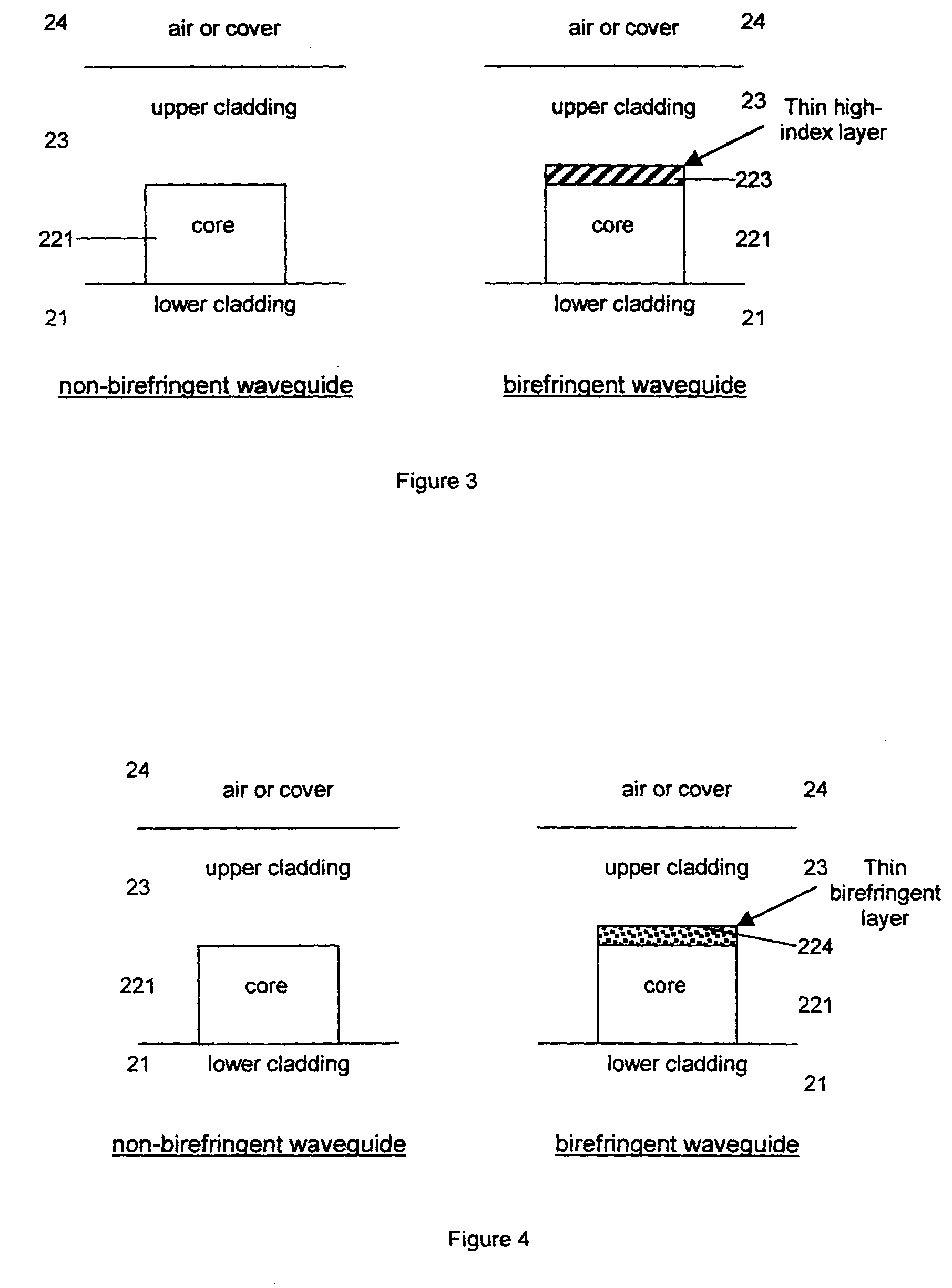Integrated optics polarization beam splitter using form birefringence
a technology of integrated optics and polarization beams, applied in the field of integrated optics polarization beam splitters using form birefringence, can solve the problems of affecting performance, cost and yield, scattering loss, and the inability to deposit most anisotropic materials, and achieves a substantial difference in propagation constants
- Summary
- Abstract
- Description
- Claims
- Application Information
AI Technical Summary
Benefits of technology
Problems solved by technology
Method used
Image
Examples
Embodiment Construction
Consider the waveguide structure that is shown in cross section in FIG. 5. The core material is silicon oxynitride (SiON) with a refractive index of nco=1.70. The upper and lower claddings are silica (SiO2) and thermal oxide (thermally grown SiO2) respectively, both with an index of ncl=1.45. SiON and SiO2 can be deposited by chemical vapor deposition (CVD), which is well known in the integrated optics and semiconductor fields. Silica can also be deposited by flame hydrolysis (FHD), or by sputtering. Other suitable core materials include silicon nitride (SN), silicon (Si), and Tantalum oxide-silica (Ta2O5:SiO2) that is sputter deposited. Preferably the core to cladding index contrast (nco-ncl) is larger than 0.05, and we call such contrasts “high-index contrast”. The desired waveguide height h can vary between 0.5 um to 4.0 um for high index contrast guides operating at a wavelength near λ=1.55 um. Here it is selected as h=1.5 um. The height is typically chosen so that the waveguid...
PUM
| Property | Measurement | Unit |
|---|---|---|
| optical | aaaaa | aaaaa |
| electric | aaaaa | aaaaa |
| transverse magnetic | aaaaa | aaaaa |
Abstract
Description
Claims
Application Information
 Login to View More
Login to View More - R&D
- Intellectual Property
- Life Sciences
- Materials
- Tech Scout
- Unparalleled Data Quality
- Higher Quality Content
- 60% Fewer Hallucinations
Browse by: Latest US Patents, China's latest patents, Technical Efficacy Thesaurus, Application Domain, Technology Topic, Popular Technical Reports.
© 2025 PatSnap. All rights reserved.Legal|Privacy policy|Modern Slavery Act Transparency Statement|Sitemap|About US| Contact US: help@patsnap.com



